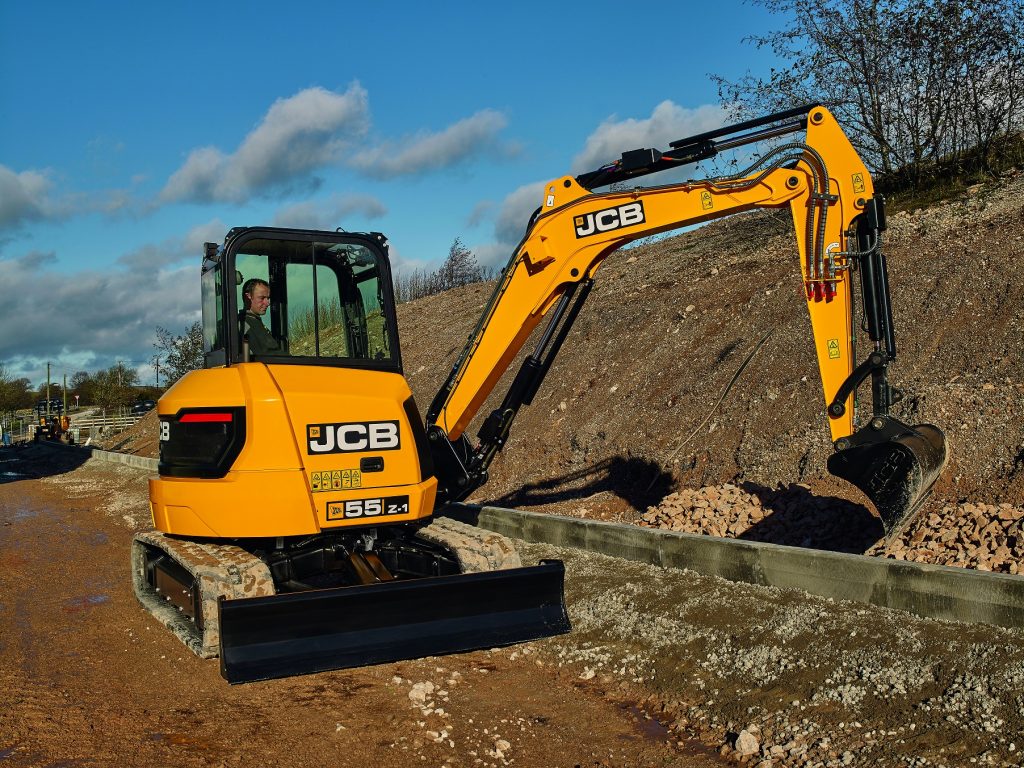MINI EXCAVATOR TAIL SWINGS: CONVENTIONAL VS. REDUCED VS. ZERO

Do you know which mini excavator tail swing is right for you? We’ve made it easy by spelling out the pros and cons of zero, reduced and conventional tail swing excavators.
Zero Tail-Swing Excavator
A zero tail-swing excavator’s upper body can rotate within the machine’s undercarriage width.
Pros: You can work in congested areas. These diggers offer ease of manoeuvrability which reduces damage to the machine, buildings, fences and other obstructions when working closely to them. It also allows operators to use machines in confined spaces or on roadsides with minimal traffic disruption.
Cons: Due to their shorter tail radius, zero swings are likely to have lower rated operating capacities than reduced tail or conventional tail swings designs. With heavy attachments or loads the zero swing is likely to pitch more than a conventional machine.
The Verdict: These machines are most useful for applications where space is confined and there is a need to operate the machine through minimum 90 degree arcs. They may also be beneficial in civil construction applications where space is limited due to pedestrians or traffic. Matching the correct attachment size / weight is really important for optimum performance and comfort.
Reduced Tail- Swing Excavator
The chassis on these excavators extends only a few centimetres beyond the width of the undercarriage.
Pros: Similar to the zero-tail swing excavators these machines can be used in confined spaces and generally they will provide better lifting capacity, greater efficiency and operator comfort due to a longer tail radius.
Cons: Because the rear counterweight extends beyond the undercarriage width the rear of the machines or ground structures may be damaged.
The Verdict: If you are looking for a machine that works well in tight spaces and offers more lift capacity than a than a zero- tail swing, then this digger might be the right choice for you if available. As with the zero tail swing, properly matched attachments in size and weight are important items to consider.
Conventional Tail- Swing Excavator
An extended upper structure will usually achieve maximum digging performance when comparing to the previous two tail swing configurations.
Pros: Conventional tail swings have a longer tail swing radius providing a greater leverage factor that can result in higher outputs than the zero and reduced tail swings configurations. This is because the distance beyond the centre of the machines turret is greater and its counterweight effect provides the machine with more leverage. Providing the application allows for the machines longer operating dimensions, the conventional tail swing machine will provide more comfort and more productivity.
Cons: In confined spaces where the machine’s upper body is required to rotate through the 45 degrees plus, the conventional tail swing configuration is likely to restrict your ability to get the job done without site modifications.
The Verdict: The conventional tail swing in the right site environment will provide higher levels of performance, productivity and comfort when compared to the previous two configurations.
Its not often that a manufacturer will offer all 3 tail swing options with in the same class and that may mean you have to change the size of machine you were originally contemplating or the size therefore weight of the attachment package you were considering.
For more information on mini excavators please contact your local dealer or contact us on 1300 522 232
